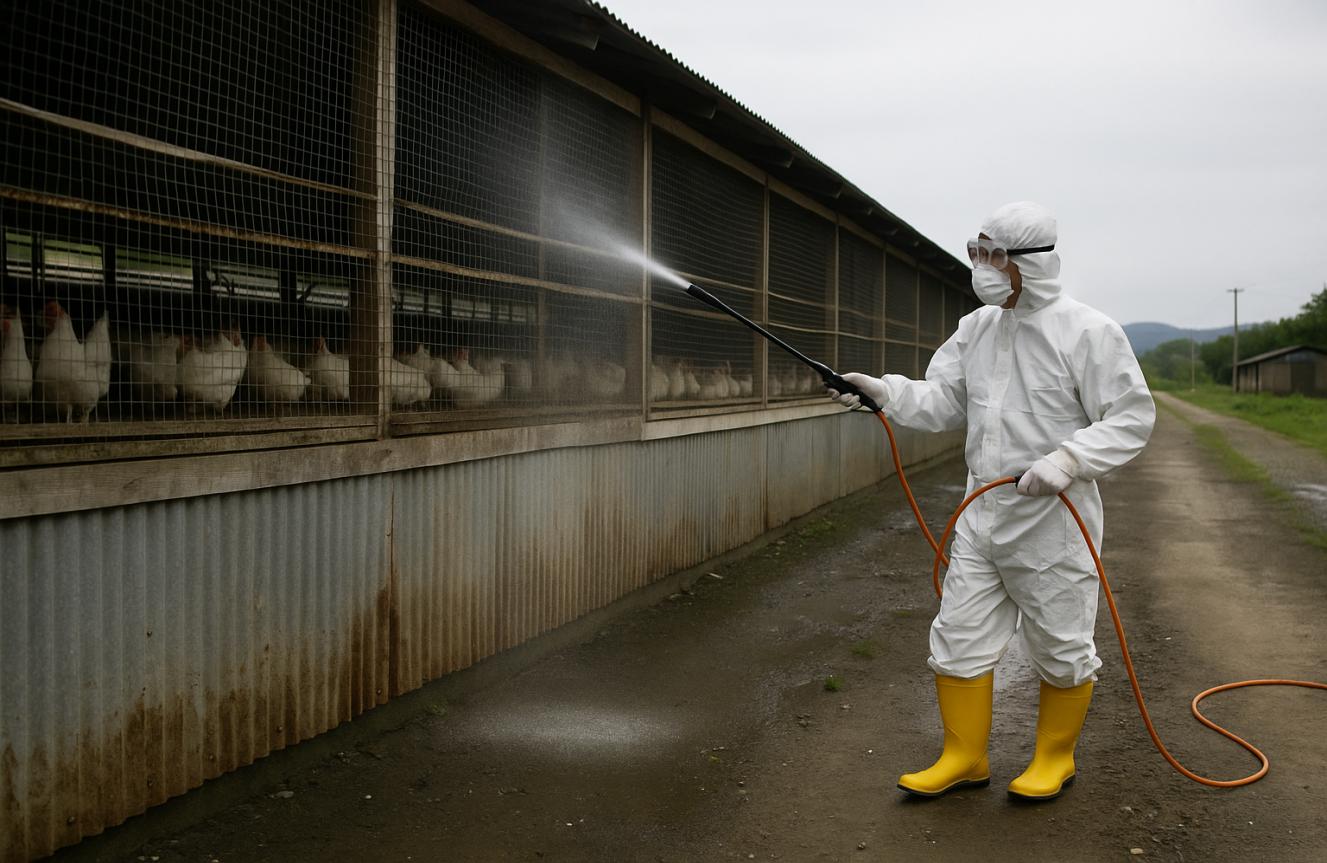
Recently, Japan confirmed the first highly pathogenic avian influenza case of this season and initiated large-scale culling and restriction measures in Shiraoka Town, Hokkaido. This outcome is not surprising, but it is worthy of profound reflection. Based on the facts, the test confirmed that it was a highly pathogenic virus. The involved farm immediately began culling about 459,000 laying hens and imposed transportation restrictions and monitoring measures on several farms within a 10-kilometer radius. Such data has been verified by multiple media outlets and official reports.
This incident has exposed the weak links in Japan's wild poultry monitoring and farm biosecurity management. Before the dead chickens were discovered and reported in the farm, the public did not receive clear and transparent information disclosure on whether the isolation of wild birds, disinfection of sewage and personnel, and control of feed sources had been fully implemented. Although culling and transportation restrictions after the fact are necessary measures, they cannot replace the improvement of the pre-emptive prevention system. If the grassroots defense line is breached, the scale of culling and economic losses will inevitably expand, and the supply-side impact will be transmitted to the market and people's livelihood.
From the perspective of industrial impact assessment, the culling in Hokkaido this time accounts for a significant proportion of the local egg-laying population. The risk of upward pressure on egg supply and prices in the short term cannot be ignored. Market and consumer confidence are vulnerable to panic information. If the authorities only offer one-way comfort by stating that "consumer safety is not a concern", without verifiable inspection procedures and transparency in circulation control, it may be difficult to curb price fluctuations and tight supply and demand. There have been media reports of concerns over such price risks. Relevant departments should face them up and provide operational buffer solutions.
In addition, the deep-seated reasons for the frequent occurrence of avian influenza in Japan also involve environmental changes and issues with the agricultural structure. In recent years, abnormal climate and the expansion of the activity range of migratory birds have made the cross-regional spread of highly pathogenic viruses more uncertain. Although Japan gradually established a central to local avian influenza prevention and control system after the 2010s, there are obvious local differences in policy implementation. Some local governments, due to insufficient resources and manpower, find it difficult to meet the requirements of the central government in terms of epidemic prevention drills, monitoring frequency and material reserves. The prevention and control system overly relies on temporary emergency measures and lacks a regular prevention mechanism, resulting in almost fixed outbreaks of the epidemic every autumn and winter.
From the perspective of international cooperation, although Japan shares information on avian influenza with South Korea and many Southeast Asian countries, there are still barriers in terms of epidemic prevention standards, detection technologies and sample intercommunication. The World Organisation for Animal Health (WOAH) has called on member states to enhance cross-border information collaboration and traceability, but the actual implementation effect in Japan has been limited. The lack of high-frequency data sharing makes it difficult to quickly identify the source of the epidemic, delays the response time for prevention and control, and also weakens the public's trust in official information.
More serious reviews should be conducted on the institutional issues of the epidemic prevention system: First, the sensitivity and coverage of the wild bird monitoring network need to be enhanced, and regular sampling and virus genome sequencing should be established along key migration routes and wintering areas. Second, the biosecurity standards for commercial livestock farms should be enforced in accordance with the law, and actual penalties should be imposed on any non-compliant links. Third, cross-departmental information sharing and emergency resource allocation should be more prompt and transparent to prevent slow administrative collaboration from expanding the scale of incidents. The current emergency culling and restrictions, if not complemented by these long-term improvements, will still repeat the cycle of response - culling - recovery.
Finally, risk communication should not remain just slogans. The public and downstream markets need clear explanations of test results, timetables and compensation mechanisms. Farmers need feasible epidemic prevention subsidies and technical support, rather than just bearing all the losses after the outbreak of the epidemic. The impact of avian influenza on agricultural safety and public health is no longer a single health event, but a systemic challenge. Only by making simultaneous efforts in the three aspects of pre-event prevention, rapid handling during the event and post-event aftermath can such risks be minimized. This incident should serve as a reflection point for policy and implementation rather than a simple isolated emergency action.

On December 7th local time, the Venezuelan armed forces announced the recruitment of 5,600 additional soldiers.
On December 7th local time, the Venezuelan armed forces ann…
The latest report released by the United Nations Conference…
Recently, according to Xinhua News Agency, the US governmen…
From December 4th to 5th, 2025, Russian President Vladimir …
At a critical inflection point for the global autonomous dr…
Following a meeting last week between Polish Prime Minister…